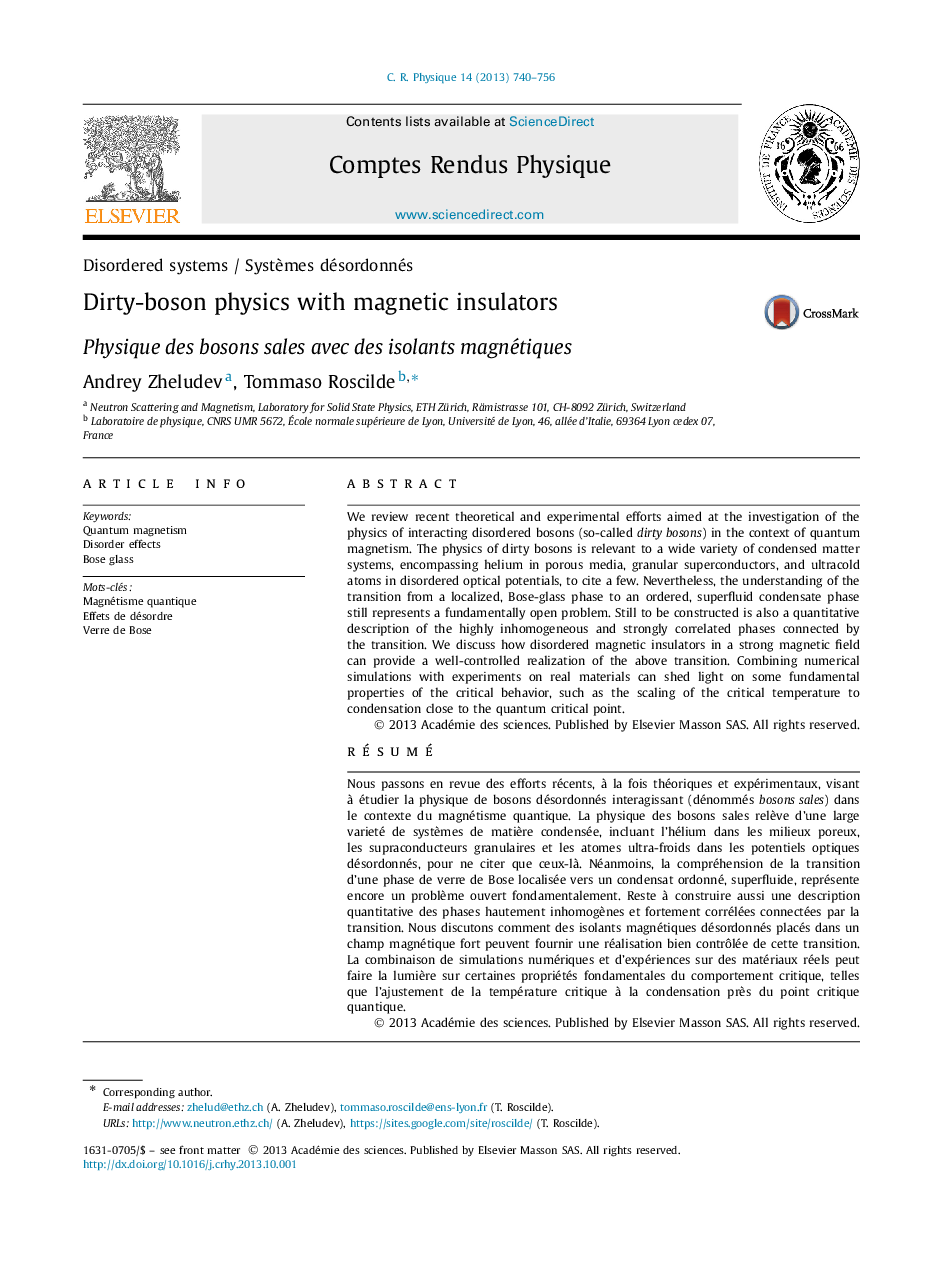| Article ID | Journal | Published Year | Pages | File Type |
|---|---|---|---|---|
| 1858568 | Comptes Rendus Physique | 2013 | 17 Pages |
We review recent theoretical and experimental efforts aimed at the investigation of the physics of interacting disordered bosons (so-called dirty bosons) in the context of quantum magnetism. The physics of dirty bosons is relevant to a wide variety of condensed matter systems, encompassing helium in porous media, granular superconductors, and ultracold atoms in disordered optical potentials, to cite a few. Nevertheless, the understanding of the transition from a localized, Bose-glass phase to an ordered, superfluid condensate phase still represents a fundamentally open problem. Still to be constructed is also a quantitative description of the highly inhomogeneous and strongly correlated phases connected by the transition. We discuss how disordered magnetic insulators in a strong magnetic field can provide a well-controlled realization of the above transition. Combining numerical simulations with experiments on real materials can shed light on some fundamental properties of the critical behavior, such as the scaling of the critical temperature to condensation close to the quantum critical point.
RésuméNous passons en revue des efforts récents, à la fois théoriques et expérimentaux, visant à étudier la physique de bosons désordonnés interagissant (dénommés bosons sales) dans le contexte du magnétisme quantique. La physique des bosons sales relève dʼune large varieté de systèmes de matière condensée, incluant lʼhélium dans les milieux poreux, les supraconducteurs granulaires et les atomes ultra-froids dans les potentiels optiques désordonnés, pour ne citer que ceux-là. Néanmoins, la compréhension de la transition dʼune phase de verre de Bose localisée vers un condensat ordonné, superfluide, représente encore un problème ouvert fondamentalement. Reste à construire aussi une description quantitative des phases hautement inhomogènes et fortement corrélées connectées par la transition. Nous discutons comment des isolants magnétiques désordonnés placés dans un champ magnétique fort peuvent fournir une réalisation bien contrôlée de cette transition. La combinaison de simulations numériques et dʼexpériences sur des matériaux réels peut faire la lumière sur certaines propriétés fondamentales du comportement critique, telles que lʼajustement de la température critique à la condensation près du point critique quantique.
